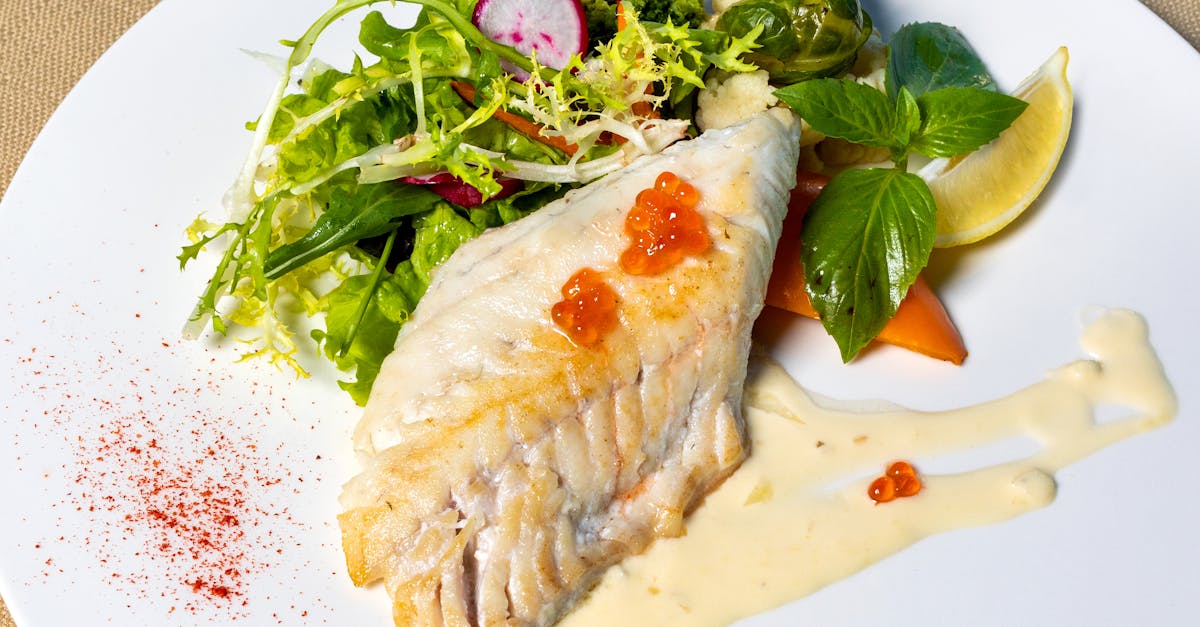Why frying frozen haddock fillet can be a quick option

Nutritional Benefits of Haddock
Haddock is a highly nutritious fish, packed with vitamins and minerals that contribute to overall health. It is an excellent source of high-quality protein, essential for muscle repair and growth. Additionally, this fish contains important B vitamins, particularly B12, which is crucial for energy production and maintaining a healthy nervous system. The presence of selenium and phosphorus also adds to the fish's appeal, supporting immune function and bone health.
In terms of caloric content, haddock is a low-fat option, making it suitable for various dietary preferences. Its omega-3 fatty acids offer anti-inflammatory benefits and support cardiovascular health. This combination of nutritional qualities positions haddock as a versatile ingredient that can be easily incorporated into a balanced diet.
High Protein Content and Low Fat
Haddock stands out as an excellent source of protein, making it a popular choice for those seeking to incorporate more lean meats into their diets. A single fillet can deliver a substantial amount of protein without overwhelming levels of calories, which is particularly beneficial for fitness enthusiasts and anyone looking to maintain a healthy weight. The protein aids in muscle repair and growth, while also helping to keep you satiated for longer periods.
In addition to its high protein content, haddock is low in fat, which enhances its appeal as a nutritious food option. This lower fat content makes it suitable for various dietary requirements, allowing people to indulge in a tasty fish dish without the guilt associated with fried or fatty meats. The balance of protein and low fat makes haddock an ideal candidate for quick meals that do not compromise health.
Selecting Quality Frozen Fillets
Opting for frozen haddock fillets requires attention to detail to ensure quality. When selecting, look for packaging that seals the fillets in a protective layer. Transparent portions of the packaging can provide visibility, allowing you to check for any signs of freezer burn. Quality brands will typically have a clear indication of the fish's origin, ensuring sustainability and freshness.
Another crucial factor to consider is the fillet’s texture upon inspection. Choose fillets that appear firm and without excessive ice crystals, as these can indicate that the fish has thawed and refrozen. Look for products without added preservatives, as these can alter the natural taste of the haddock. Reading reviews or trusting brands known for their seafood can also enhance your selection process.
What to Look for on Packaging
When selecting frozen haddock fillets, it's essential to pay attention to the packaging details. Look for indications of sustainable sourcing and responsible fishing practices, as this reflects the quality and environmental impact of the product. Certifications from reputable organisations can provide additional assurance of the fillets’ quality and ethical background.
The ingredients list is another crucial aspect to check. Ideally, the fillets should contain minimal additives and preservatives. Freshness is also indicated by the date on the package. Ensure that the fillets are well within the use-by date to guarantee optimum taste and texture upon cooking.
Cooking Equipment You Need
When frying frozen haddock fillets, having the right equipment is essential for achieving the best results. A sturdy frying pan is important, ideally made from non-stick material to prevent the fish from sticking during cooking. This helps maintain the delicate texture of the fillet while ensuring an even cooking process. A skillet with high sides can also be beneficial, as it helps contain any splatter that may occur.
Additionally, consider the heat source you will use. A gas stove provides instant heat adjustments, allowing for precise control over the cooking process. If using an electric stove, ensure the pan is compatible with the heat settings available. Invest in a reliable fish spatula for flipping the fillets. The thin, flexible design allows for easy maneuvering without breaking the fish apart.
Choosing the Right Frying Pan
The choice of frying pan can significantly affect the cooking process and the final result when preparing frozen haddock fillets. A non-stick frying pan is often preferred, as it allows for easy release of the fish and reduces the amount of oil needed. Look for a pan with a sturdy base that distributes heat evenly, ensuring that the fillets cook thoroughly without burning. Size matters too; a larger pan prevents overcrowding, promoting even cooking and optimal browning.
Cast iron or stainless steel pans also offer great alternatives, particularly for achieving a nice sear. Cast iron retains heat exceptionally well, which can improve the crispiness of the haddock’s outer layer. Stainless steel pans provide a good balance of heat retention and distribution. Regardless of your choice, ensure that the pan is preheated before adding the fillets to maximise flavour and texture.
FAQS
Can I fry haddock fillets straight from frozen?
Yes, you can fry haddock fillets directly from frozen, making it a quick and convenient option for meal preparation.
What are the nutritional benefits of haddock?
Haddock is rich in protein while being low in fat, making it an excellent choice for a healthy diet.
How do I select quality frozen haddock fillets?
Look for fillets that are vacuum-sealed, free from ice crystals, and have clear labelling regarding the catch date and source.
What type of frying pan is best for cooking frozen haddock fillets?
A non-stick frying pan is recommended as it prevents the fillets from sticking and allows for even cooking.
How long does it typically take to fry frozen haddock fillets?
Frying frozen haddock fillets generally takes about 10-15 minutes, depending on the thickness of the fillet, until they are cooked through and golden.
Related Links
7 best spices for frozen haddock filletWhy poaching is a healthy method for frozen haddock fillet
Roundup of top cooking methods for frozen haddock fillet